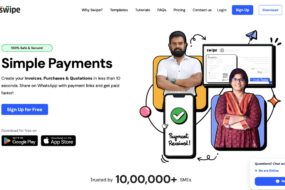
To design a strong website, you often need to look beyond aesthetics. While a clean and professional layout is important, you must also be able to anticipate how a prospective user will navigate through your site. Bear in mind that users are often impatient and if they can’t find what they’re looking for right away, they’ll likely search elsewhere – like a competitor’s webpage. It’s therefore critical to make user experience a priority when developing anything for the web; use the following four principles to help you achieve the traction you’re looking for.
Ensure Your Site Is User-Intuitive
The golden rule is never to confuse users or to make them think too hard when interacting with your website interface. Everything about a page should be self-explanatory, and users should be able to move from point A to B without hassle. The route a user takes to find the information they’re looking for should be obvious to them else you risk trying their patience. The less mental energy required of a user to navigate through a page, the more likely new users will be willing to take a few seconds and browse. This increases your reach, boosts your SEO, and your online presence starts to grow.
Focus Your User’s Eye
Once you have a website that is user-friendly, you can start to have influence over the pathways your users take; for example, employ design to strategically direct visitors towards specific pages, buttons, or posts. Remember that the eye is drawn to images and bold texts; you can also emphasize content using patterns and edges. Even moving objects like banners or videos can capture a user’s attention and offer positive results (clicks and sales) when used sparingly. Many hosting services offer a website builder as part of their shared packages; it allows businesses to easily add apps, widgets and tools to their sites that engage users. Entities like HostPapa even provide tutorials for those with little to no design experience, teaching them to create optimally functioning pages. Their easy-to-use website builder allows you to build an efficient, appealing site that comes with a suite of top-tier security features. The HostPapa Blog has valuable information on building your site securely and affordably — visit them today to compare plans and pricing.
Research Your User’s Browsing Habits
Really get to know what your target market searches for online. Familiarize yourself with popular keywords, questions, and issues. Then, allow those queries to be reflected in your writing and website copy. Think about your users’ preferences; most like for what they read to feel authentic, not overly promotional, short and to the point. Typically, they’re on your site to take care of a need – how can you make them feel confident in choosing your business to meet it?
Keep Things Simple
When it comes to web design, less is often more. While users can appreciate aesthetics, and while some are online to have an experience (game-playing, article-reading) most just want information. They want to learn how your business can solve an issue they’re having quickly and affordably without taking too much time out of their day. By keeping in mind how a user is likely to move through your content, you’ll incorporate two very important elements to web design – practicality and ease.















